Hydroaviation of the USSR Navy against Kriegsmarine
The slightly changed name suggests that today we will look at planes that are not related to the usual Red Army and Luftwaffe air forces. Today we will talk about the hydroaviation, which was administered by the fleets.
We refer to hydroaviation seaplanes (aircraft with floats instead of landing gear) and flying boats (the fuselage itself serves as a float).
the USSR
In this material, we will not consider airplanes and boats by years, since everything that was in service in the USSR before the war, everything fought back.
The huge coastline of the Soviet Union implied the presence of aircraft capable of operating under sea conditions. And there were such planes.
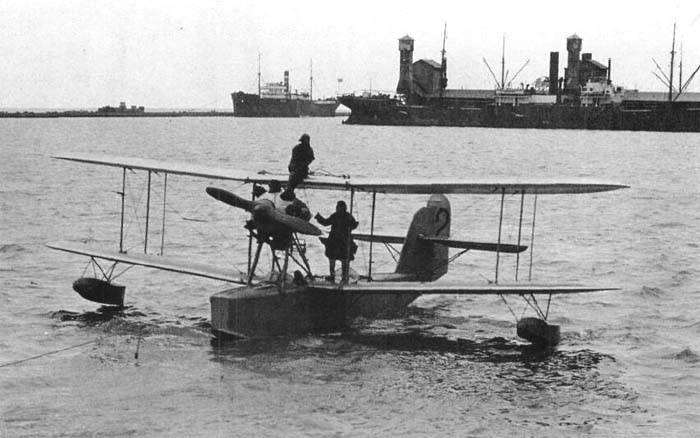
The Heinkel HD55 or the licensed Heinkel became the firstborn of the Soviet hydroaviation KR-1. Since 1930, about 40 vehicles have been assembled, which were used as ejection reconnaissance aircraft on ships of the Baltic and Black Sea fleets, the battleships Marat and Paris Commune, and the cruisers Profintern, Chervona Ukraine and the Red Caucasus.
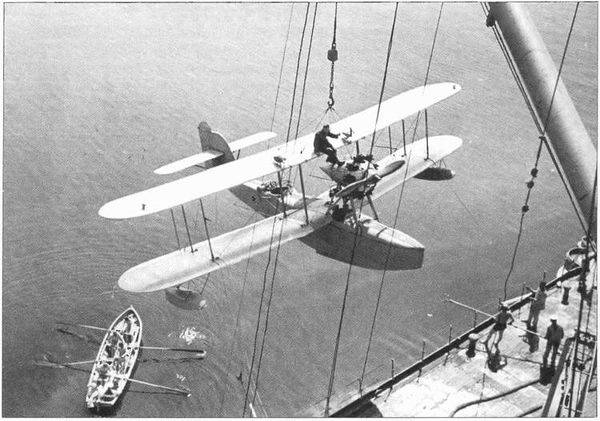
TTX.
Weight maximum take-off: 2 270 kg
Engine type: 1 x Siemens Sh.20 x 480 hp With.
Maximum speed: 194 km / h
Cruising speed: 175 km / h
Practical range: 800 km
Ceiling: 4 800 m
Crew: 2 people
Armament: one machine gun PV-1 and two YES in caliber 7,62 mm.
According to the results of tests of КР-1, it immediately became clear that the sooner the Heinkel replacement comes, the better it will be, the plane was neither outstanding nor modern.
This is how KOR-1 appeared.
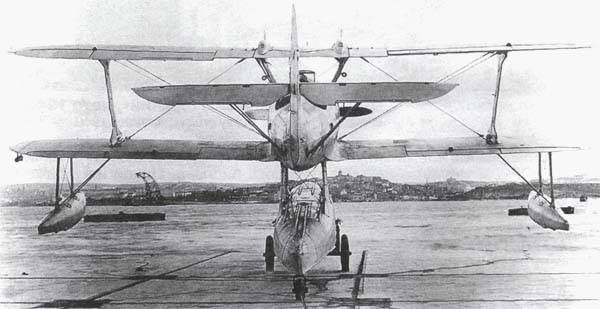
COR-1 (Be-2) - deck ejection float seaplane, which was planned to be used as a scout. Developed in the 1936 year OKB under the leadership of G. M. Beriev.
KOR-1 did not pass the state tests, but due to the lack of alternatives, it was released at Aviation Plant No. 31. Mr. Dimitrov is a series in 12 units and was in service in 1939 — 1940-s.
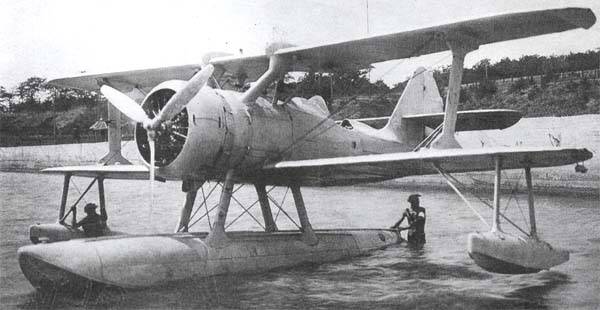
Technical specifications
Crew: 2 people
Curb weight: 2093 kg
Maximum takeoff weight: 2486 kg
Powerplant: 1 × M-25 × 635 l. with.
Maximum speed: 277 km / h
Practical range: 530 - 1000 km
Ceiling: 6 600 m
Armament: Shkas machine gun 3 7,62-mm, 2 x FAB-100 (overloaded version)
The tests and the use of the KOR-1 revealed significant shortcomings of the seaplane and the Beriev Design Bureau rather quickly designed with the KOR-2 data received (Be-4).
COR-2 (Be-4)
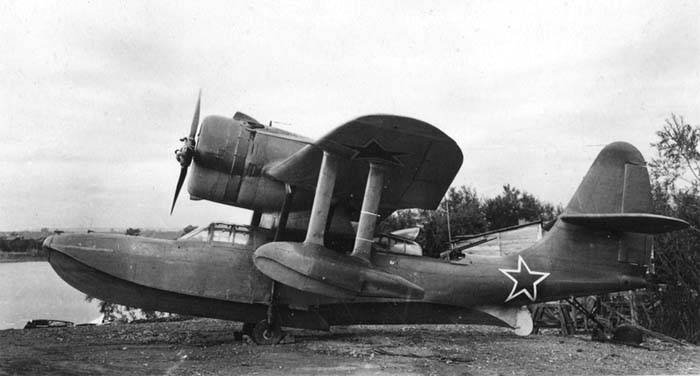
KOR-2 - deck ejection flying boat. The plane was prepared for the fate of the naval reconnaissance of the close range on the newly built ships.
The war has made adjustments to the construction of the ocean fleetNevertheless, KOR-2 was adopted and was produced from 1942 to 1945 in small batches.
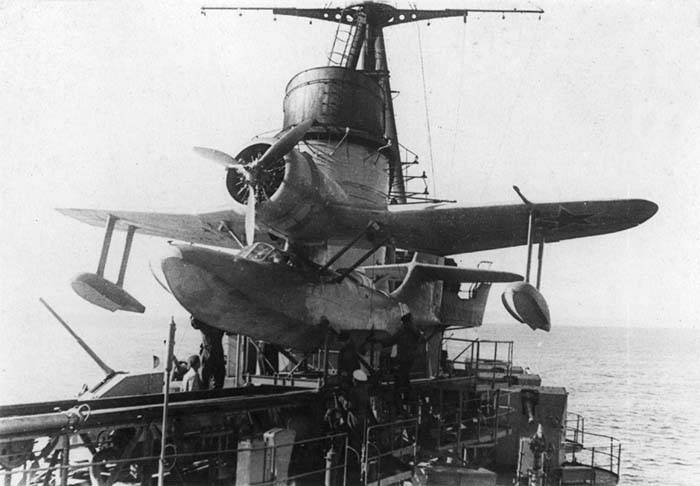
Total 44 aircraft was released
Technical specifications
Crew: 2 people
Maximum takeoff weight: 2760 kg
Powerplant: 1 × M-62 × 850 l. with.
Maximum speed: 356 km / h
Practical range: 550 - 1150 km
Ceiling: 8 100 m
Armament: Shkas machine gun 2 7,62-mm, bomb 4 FAB-100 (overloaded version)
Che-2 / MDR-6
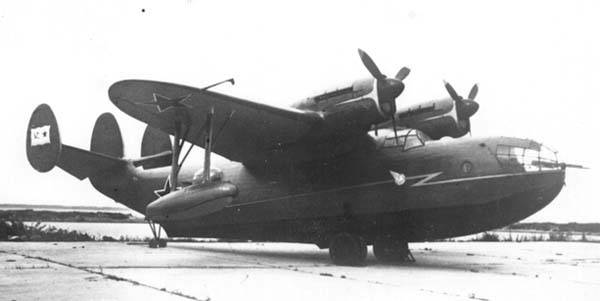
According to the original plans, the aircraft was called the MDR-6 (Marine Long Range Scout). Made under the "flying boat" scheme, but compared to all its predecessors, it was already a twin-engine monoplane.
MDR-6 was created in OKB-45 under the leadership of I. V. Chetverikov, making its first flight in the summer of 1937. From the beginning of 1939, small-scale production was established at plant No. 31 in Taganrog, which continued until the plant was evacuated in the fall of 1941. In the same year he received the name Che-2.
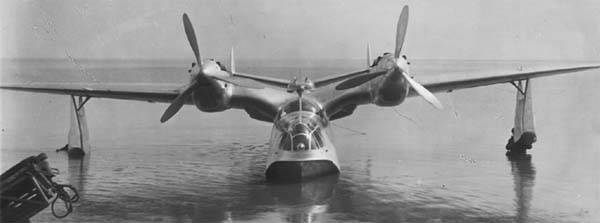
Small arms consisted of three firing points. The bow rifle installation was a turret of the type NU-DB-3 under the ShKAS machine gun of 7,62-mm caliber with a KPT-5 sight.
The medium rifle installation consisted of a serial turret of the SU-DB-3 type under a ShKAS machine gun of 7,62 caliber mm.
The hatch rifle installation was of the type of pivotal installation of the DB-3 aircraft under the ShKAS machine gun of caliber 7,62 mm. The cartridge box with a capacity of 1000 pieces was located on a special platform on the starboard side. In the stowed position, the machine gun was placed vertically on the starboard side. On the casing, on the left side, there was a cable with a carbine, which the shooter fixed when firing.
The maximum bomb load of the aircraft was 1200 kg. Weapon options: twelve FAB-100 or FAB-50, four FAB-250 or BRAB-220, two FAB-500.
TTX Che-2
Weight maximum take-off: 7 200 kg
Engine type: 2 x M-63 x 1100 hp
Maximum speed: 360 km / h
Cruising speed: 309 km / h
Practical range: 2 650 km
Ceiling: 9 000 m
Crew: up to 5 pax
Armament: one 12,7-mm UB machine gun and one 7,62-mm ShKAS machine gun
up to 1000 kg bombs
Most of the production aircraft that received the designation Che-2, were produced with M-63 engines with a capacity of 1100 liters. with. The machine, despite its large size, was fairly light. The weight of empty Che-2 did not exceed 4100 kg, take-off - 6700 kg. In the reloading variant, the flying boat weighed 7200 kg. Thanks to its aerodynamic forms, the aircraft had good flight and seaworthy data.
Che-2 had a removable wheeled chassis, allowing you to be based on the coast.
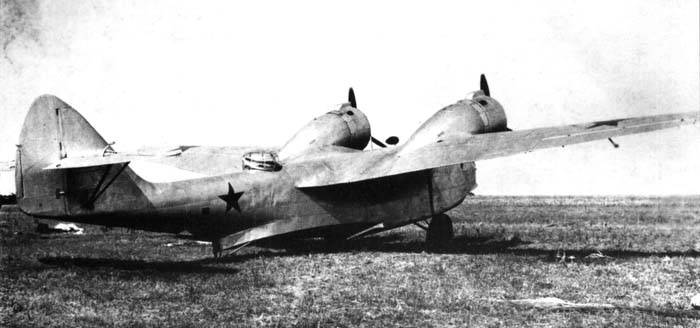
The aircraft was used as part of all 4 fleets from the end of 1940 to 1946.
Further we will talk about aircraft that played a more significant role in the marine aviation.
The first, of course, the famous "barn", naval neighbor scout MBR-2.
This flying boat was created in the Beriev Design Bureau in 1931, the first flight took place in 1932, and after the meeting with Stalin 5 in August 1933, the aircraft went into series.
Despite the fact that the MBR-2 was wooden, it showed very good flight and seaworthy qualities, being in no way inferior to classmates in the world.
The wooden structure required a delicate attitude, after each departure the plane had to be dried. But naval aviation needed a simple and reliable aircraft, and the MBR-2 became one.
In 1938, on the MBR-2 (more precisely, on its civilian version MP-1), the crew of military pilots (Polina Osipenko, Vera Lomako and Marina Raskova) made a record non-stop flight on the route Sevastopol - Kiev - Novgorod - Arkhangelsk with a length of 2 416 km.
During the Great Patriotic War, the MBR-2 was used as a naval neighbor and partly as a long-range reconnaissance aircraft. There was a special aerial photography option, as well as the MBR-2 used as a light bomber.
“Ambarchik” honestly otpahal the entire blockade of Leningrad, like a fellow W-2. A tactic was applied when German airfields bombed single planes throughout the night, coming at intervals of 15-30 minutes.
Such blows not only exhausted the Germans, but often led to sensitive losses. So, on the night of September 30 1942, four MBR-2s were in turn dropped on the airfield in Krasnogvardeysk (Gatchina) 20 FAB-100 and 15 AO-15. According to enemy reports, as a result, two Ju-87 from 7 / StG1 were destroyed and Bf-109G-2 from Stab JG77 was damaged.
It should be noted that from 1534 sorties made by the Red Banner Baltic Fleet air forces against enemy airfields for the entire war, the share of the ICBM-2 is 678. The fighters in second place made only 375 sorties.
As the MBR-2 bomber did not quite take place, the low speed and weak defensive armament made it an easy target. But as a scout and rescuer, it was an indispensable aircraft.
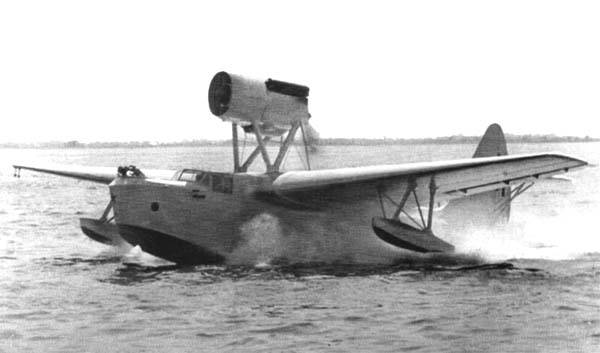
Since the water areas of the airfield airports froze in harsh winters, this did not interfere with the work. Put on skis MBR-2 flew from land aerodromes.
Having conquered the whole of the Great Patriotic War, the MBR-2 continued its combat path in the Pacific, in the war with Japan. But this was not the last milestone in his stories.
In 1946, some MBR-2 went to Korea. Together with Po-2, which received the nickname "crazy Chinese alarm clocks," "barnchiki" received at least an honorable nickname from the Yankees: "Charlie's night coffee grinders." Reports from the “other side” repeatedly referred to the actions of night light bomber, which prevented minesweepers from working.
Both Po-2 and MBR-2 became a real headache for Americans, since even on the most luxurious radars of that time, detecting a small wooden plane was still that task.
The war in Korea has put the final point in the combat career of a flying boat. By the time of the conclusion of the Ceasefire Agreement in July 1953, there were no longer any MBR-2 in the DPRK air force ranks.
At the end of the story about the MBR-2, I would like to say that the definition of the “workhorse” fits to it, as well as to the 2 software.
Created by Soviet engineers Taganrog under the leadership of Georgy Mikhailovich Beriev, the flying boat really could not boast of any elegance of forms or outstanding characteristics, it simply reliably "pulled the strap" in the battle formation and on the lines of the Civil Air Fleet.
TTH MBR-2
Normal take-off mass: 4 424 kg
Engine type: 1 x M-34НБ x 750 hp
Maximum speed: 234 km / h
Cruising speed: 170-200 km / h
Practical range: 690 km
Ceiling: 7 400 m
Crew: 2 people
Armament: two - four 7,62-mm ShKAS or YES machine guns, bombs up to 600 kg
A total of 1 365 MBR-2 aircraft of all modifications were built.
The last in our series will be just a unique car.
Ш-2
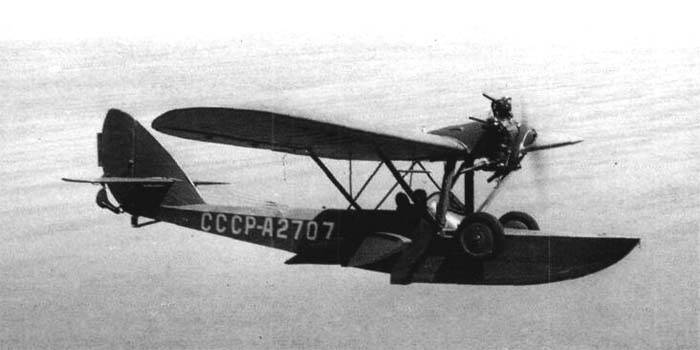
W-2 is the only large-batch aircraft in the world, the prototype of which was built in a private apartment at home.
When, in 1928, a young Leningrad engineer, Vadim Shavrov, offered Osoaviakhim a flying boat project that could land anywhere and lift a load equivalent to the weight of three people, Osoaviakhim approved the project, released the construction money and offered the Czechoslovak Walter engine 85 to the constructor l with.
The plant, where Shavrov worked, began to implement a large program of serial construction of training aircraft. The director refused to accept an order for the construction of an amphibian, only allowing assembly at the factory aerodrome.
There was only one way out: to build an airplane in the apartment of a friend and companion in the design of an amphibian - Victor Corvin. Not embarrassed by the fact that the apartment was located on the second floor.
Three of them worked: two engineers who designed the aircraft, Shavrov and Korvin, mechanic Nikolay Funtikov. Through the months of 13, the wings, the plumage and the boat-fuselage were assembled and pulled out through the balcony to the street.
In Moscow at the end of September 1929, the W-1 perfectly withstood state tests. However, the commission demanded that a more powerful domestic engine, manufactured in series, be installed on this well manned machine.
Shavrov was offered to remake the car under the Soviet serial engine M-11 in 100 l. with. After preliminary calculations, it turned out that this would require some increase in the size of the aircraft, leaving the scheme the same. Thus was born the second amphibian W-2.
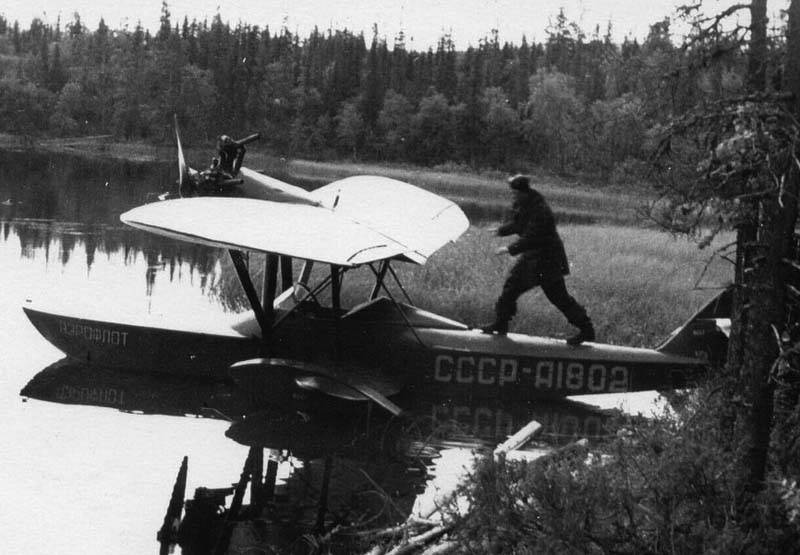
Serial production of W-2 was organized at the Taganrog plant number 31, the first aircraft was released 1 April 1932 of the year. A sanitary version of an amphibian with a compartment for stretchers designed by F. F. Lipgart was designed for the needs of air ambulance (16 of such aircraft was manufactured).
In total, 1932 machines were produced in 1934 - 270, after which their production ceased. The exploited airplanes, having developed their own resources, were gradually written off, and by the autumn of 1939, they practically did not remain in the ranks.
The situation changed with the beginning of the Soviet-Finnish war, when it became clear that there was a need for a small seaplane for operational communications among the troops, removal of the wounded in a marshland, a large number of rivers and lakes.
In this regard, the GU GVF, it was decided to return the decommissioned W-2 into service. The Leningrad aircraft repair workshops of the Civil Air Fleet (ARM-21) were engaged in the restoration and overhaul of these machines. It turned out that the simplicity and low cost of aircraft design (it was cheaper to manufacture than even the Y-2) allowed them to resume their mass production.
Under the leadership of V. F. Rentel, the project was modernized - new aircraft received the M-11D engine, improved engine mountings and counter-kicks. Before the start of World War II, they managed to assemble 50 machines in the workshops.
During the evacuation of ARM-21 in August 1941 of the year to Irkutsk, ready parts for 20 of W-2 aircraft were also sent there, the first cars were produced there in the year of 1942.
At the GVF Repair Plant No. 403, new production was also organized, and a number of changes were made to the design, dictated by the supply difficulties during the war years. In total, 1942 X-NUMX X-NUMX and 1945 were repaired in Irkutsk from 150 to 2 years.
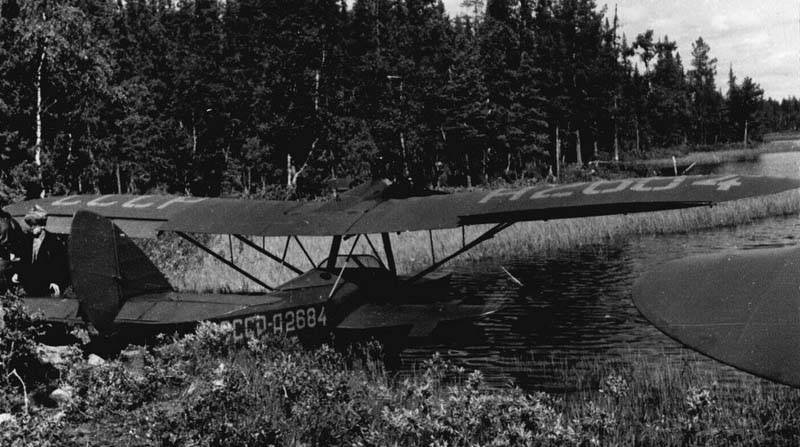
After the war, the aircraft was produced in Irkutsk in large batches in 1946 - 1947 and in 1951 - 1952. The modified version included a new, more powerful version of the M-11 engine (M-11L, 115 hp and M-11K, 125 hp), a device for starting it from a compressed air cylinder, trimmers on the handlebars heights and directions, closed cockpit.
There is no exact data on the number of W-2 released for all years. It is known that they were built from 800 to 1200). The simplicity and high maintainability of the machine (sometimes they went through 4 — 5 overhauls) ensured that the car had a long life.
Amphibians of Shavrov worked as post and passenger, ambulance, observation aircraft, as training for the training of sea pilots flying seaplanes. They were widely used in the Arctic for ice reconnaissance on icebreakers.
W-2 was widely exploited in the Caspian and on the rivers and lakes of Siberia up to the 1964 year. 32 of the year in operation - rare survivability.
Crew: 2 person (pilot and mechanic) + 1 passenger
Normal take-off weight: 937 kg
Engine type: 1 x M-11 x 100 hp
Maximum speed: 139 km / h
Cruising speed: 80 km / h
Practical range: 500 km
Ceiling: 3 100 m
As a result, it can be concluded that, although in the USSR, the hydroaviastronomy was in the second, if not in the third, plan, but nevertheless, the Soviet engineers were able to create non-energy-intensive machines with fairly good performance and performance characteristics.
Germany
In the prewar period, the main Kriegsmarine seaplane was "Arado Ar-196".
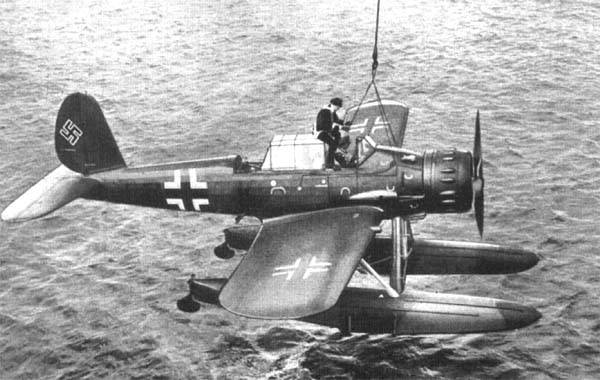
A very modern aircraft with good flying qualities also carried very decent weapons. "Arado-196" was used as a float plane from the airfield, and as ejected from the ships.
The Arado-196 was in service with all the major Kriegsmarine ships: Admiral Count Spee, Scharnhorst, Gneisenau, Deutschland, Admiral Scheer, Bismarck, Tirpitz and Prinz Eugen.
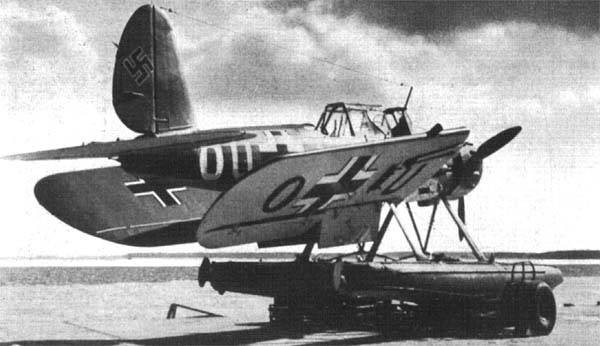
Crew: 2 man (pilot and gunner-observer)
Weight normal takeoff: 3 300 kg
Engine type: 1 x BMW-132 x 960 hp
Maximum speed: 330 km / h
Cruising speed: 265 km / h
Practical range: 795 km
Ceiling: 7 000 m
Armament: two MG-FF 20-mm cannons (in the wings), MG-7,92 X-gun machine gun (course, to the right of the cab), MG-17 X-gun machine gun (on the turret) or a MG-7,92Z twin machine.
Two 50-kg bombs.
A well-proven aircraft was in service with the Royal Air Force and Naval Aviation of Norway, Finland, Bulgaria and Romania.
Total was released 451 aircraft.
Blohm & Voss BV-138. Flying boat-far scout
In 1937, designer Vogt had a very good airplane that fought the entire war. The first use of BV-138 was in 1940 in Norway, the last was 1 in May 1945 in Berlin.
LTH on ВV-138c-1
Normal take-off mass - 14 513 kg
Engine type: 3 diesel Junkers Jumo-205D x 880 hp With.
Maximum speed: 283 km / h
Cruising speed: 234 km / h
Practical range:
Maximum: 4 272 km
normal: 1 212 km
Ceiling: 5 000 m
Crew: 6 people
Armament: one X-NUMX-mm MG-20 cannon in the bow and stern turrets and the 151-mm MG-13 machine gun on the pylon of the central engine
Bombs: 3 x 100 kg or 6 x 50 kg, or 3 x 150 kg depth charges (overload).
A small number of BB-138 seaplanes in the 1942-43 were converted into minesweepers and received the designation BB-138-MS. Aircraft upgraded in this way is also called "Mausi-fluugsoyg" - "mousetrap".
The aircraft was used to trap magnetic mines on canals, rivers and at the coastline. With BB-138-MS removed all weapons. The magnetic winding mounted on the struts around the body was powered by an auxiliary motor mounted on the place of the nose tower.
Some models of the V-138 were equipped with the HoGVTX FuG-200 locators for searching for convoys and pointing submarines on them. If necessary, the aircraft could carry 10 fully equipped infantrymen.
All were released 297 aircraft
"Dornier Do-18"
The heir to the exceptionally successful flying boat of Claude Dornier Do-16 "Wal", the Do-18 was just as reliable and easily controlled as a machine capable of very long-haul flights.
TTX
Crew: 4 person
Maximum takeoff weight: 10 795 kg
Engines: 2 × Junkers Jumo 205 × 867 l. with.
Maximum speed: 265 km / h
Cruising speed: 164 km / h
Practical range: 3 500 km
Ceiling: 4 200 m
Armament: one 20-mm MG-151 / 20 cannon, one 13-mm MG 131 machine gun, 2 50-kg bombs on wing bombs.
Do-18 served in Crigmarin as a submarine hunter, a long-range maritime reconnaissance aircraft, a patrol aircraft, and a sea rescuer.
Total was built 154 aircraft.
"Dornier" Do-24.
A three-engine flying boat developed by Dornier Flugzeugwerke for maritime patrols and rescue operations. According to Dornier records, this aircraft saved about 12 000 people during its operation.
Crew: from 3 pax
Curb weight: 18 400 kg
Propulsion: 3 × Bramo 323 x 1 000. with.
Maximum speed: 341 km / h
Combat use radius: 2 900 km
Ceiling: 5 900 m
Armament: 1 × 20-mm gun MG-151 / 20, 2 × 7,92 mm machine gun MG-15, 12 × 50 kg bombs.
This aircraft was also used as a minesweeper of magnetic mines.
A total of 1937 to 1945 year was built 279 machines of this type.
In addition, the Kriegsmarine was armed with aircraft produced in small series (up to 10 units), Dornier Do-26, Blom and Voss BV-222, which did not play any significant role in the war. For example, the Do-26 series was released in 6 machines, all six were lost during the Norwegian operation.
What can be concluded here? German seaplanes, and especially the Dornier flying boats, were the height of technical excellence. Berths, kitchens and toilets aboard Kriegsmarine distant naval intelligence officers - this was commonplace.
The role of hydroaviation on the sea and in the coastal zone was very significant. The aircraft conducted reconnaissance, detected and attacked enemy submarines, and sometimes even destroyed them, rescued those in distress.
However, the fact that the German hydroaviation was an order of magnitude stronger and more perfect than the Soviet, no matter how sad it may sound, it is true that the fate of the war was not decided in the sea and coastal zone.
Sources:
Yemelyanov S.N. Taganrog Aviation.
Shavrov V. B. The history of aircraft design in the USSR.
Shunkov V.N. Luftwaffe Aviation.
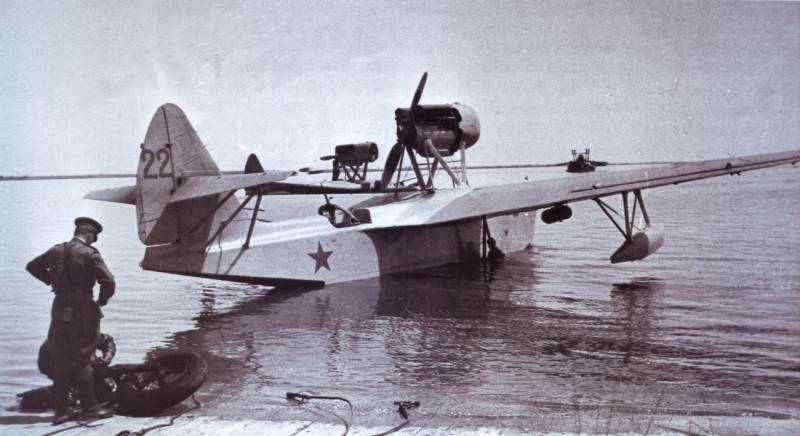
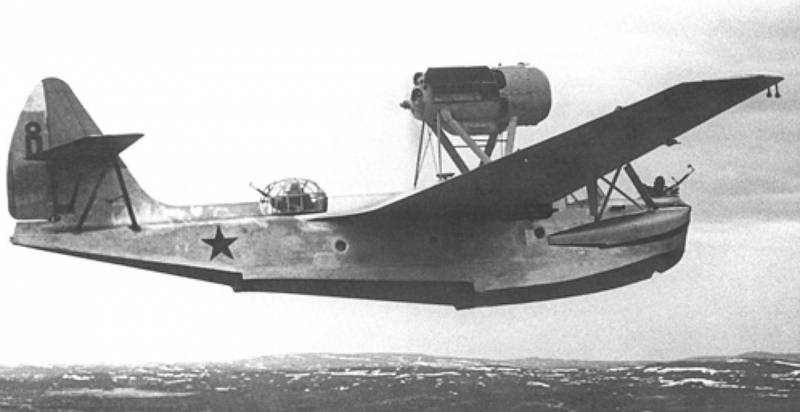
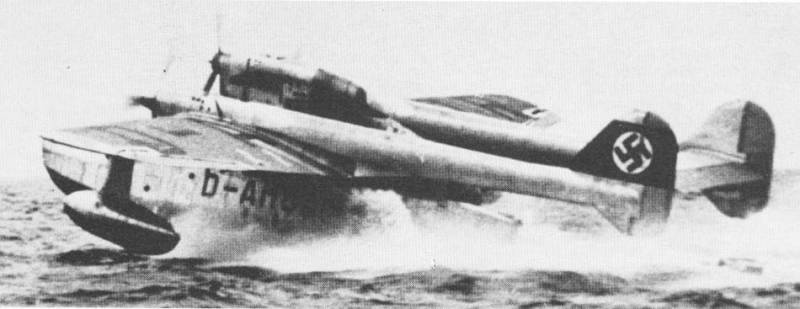
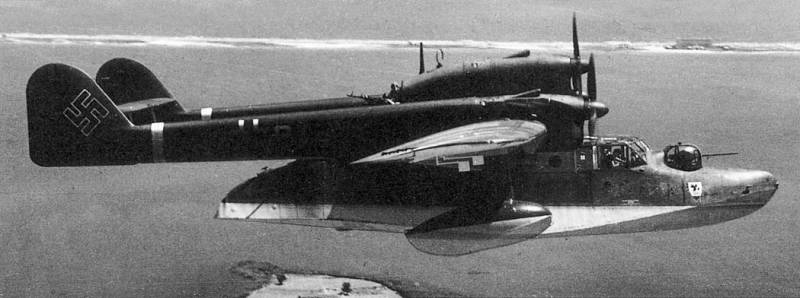
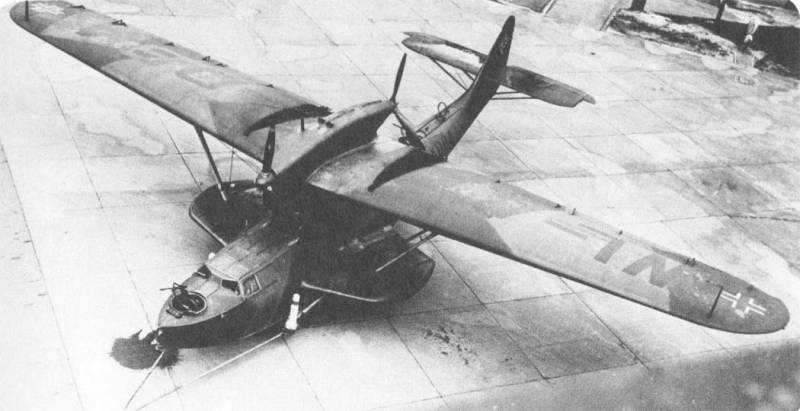
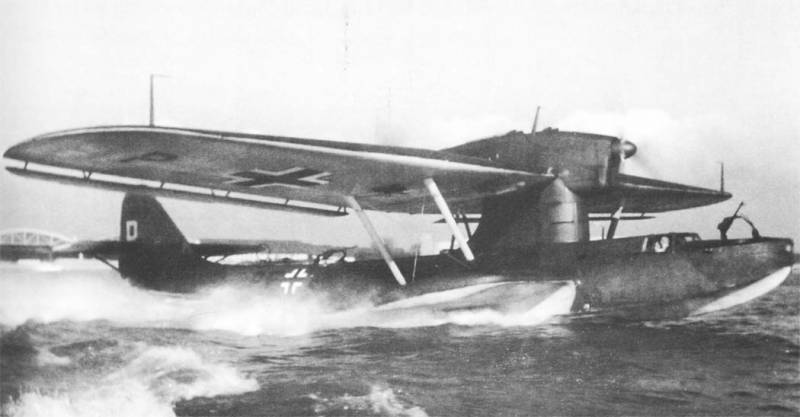
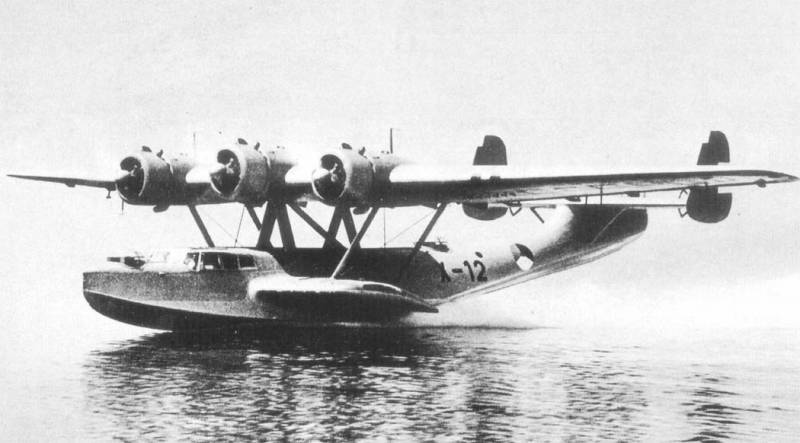
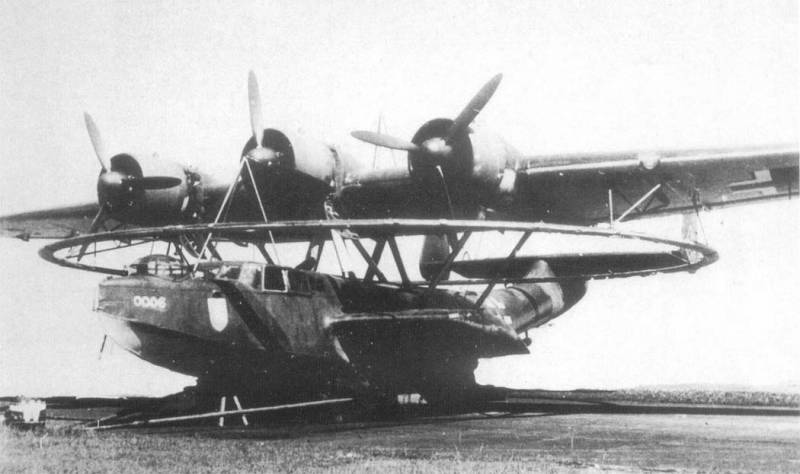
Information